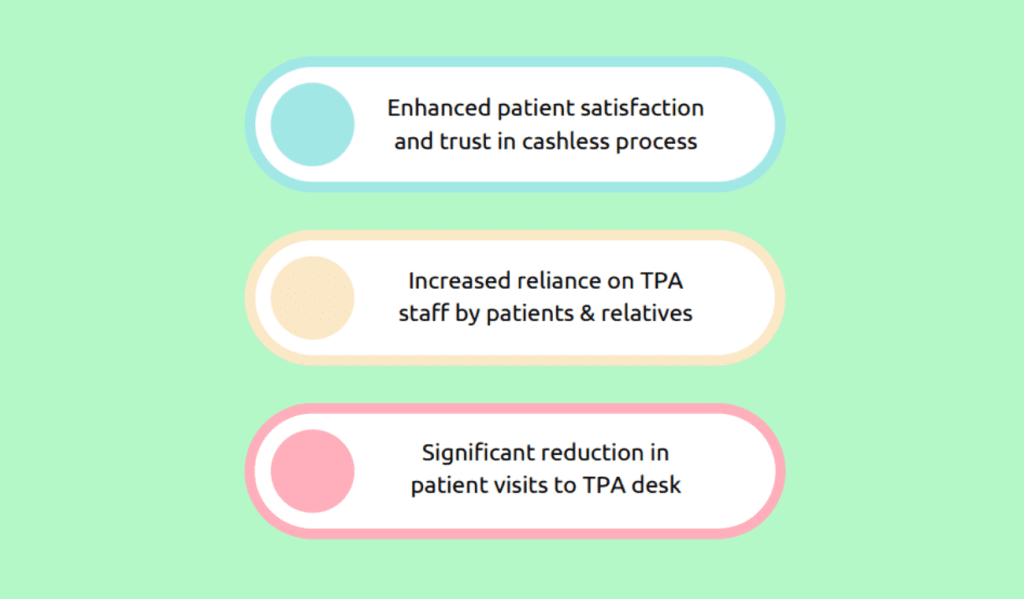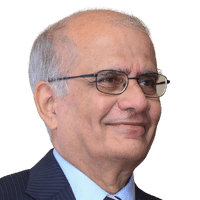Revitalizing the TPA Process: Prioritizing Patient Needs in the Hospital
Read the Magazine in PDF
Abstract :
Abstract:
This article summarizes the improvement journey of P.D. Hinduja Hospital & Medical Research Centre in enhancing the patient experience in the cashless insurance (T.P.A.) process. Through a comprehensive improvement plan, including process automation, streamlined communication, and better coordination, the hospital successfully addressed the root causes of patient dissatisfaction. Implementing these measures increased patient satisfaction, reduced visits to the T.P.A. desk, and improved trust in the staff.
Organization Profile
P.D. Hinduja Hospital & Medical Research Centre, a part of the Hinduja Group, has a rich history dating back to its establishment as a clinic in 1951. Today, it is recognized as one of India’s top multi-speciality tertiary care hospitals. With two units in Mahim and Khar, the hospital offers world-class healthcare services to patients. The Mahim unit boasts 400 beds, while the Khar unit has 100 beds equipped with state-of-the-art infrastructure. Renowned national and international doctors are on board to provide exceptional medical care.
P.D. Hinduja Hospital, Mahim, has been at the forefront of embracing technology in healthcare delivery. It was among the early adopters of advanced technologies such as the fully integrated Robotics System, Gama Knife, Digital Broadband M.R.I. with ambient themes, and True Beam Linear linear accelerator. The hospital has also received accreditations and certifications from esteemed bodies like NABH, C.A.P., and ISO, highlighting its commitment to quality care. Collaborations with leading international institutes, including the Division of AIDS (NIAID, N.I.H.), U.S.A., further reinforce its dedication to advancing medical research and treatment.
Recognized as a top-tier multi-speciality hospital, P.D. Hinduja Hospital has received numerous accolades from industry bodies. In the Newsweek World’s Best Hospital Survey, it ranked No. 1 in western India in 2020 and 2021. Additionally, it secured the third position among private hospitals in India and the sixth among all hospitals in the country. The hospital also actively engages in charitable initiatives, providing free or concessional treatment to needy people. Through its Serve with Passion rural health program, it offers free healthcare services to tribal areas in Maharashtra.
Introduction :
Hinduja Hospital, a distinguished private charitable trust hospital in Mumbai, is committed to providing quality healthcare for all. As part of our ongoing efforts to enhance the patient experience, we recognized the need to address issues within our cashless insurance (TPA) process. Through careful analysis of patient feedback, we identified significant areas for improvement in our cashless process. Patients faced challenges throughout the journey, from pre-authorization to discharge.
Certain patients encountered unpleasant experiences, often unknowingly, due to existing hospital practices and behavioural issues involving TPA, clerical staff, nursing staff, and doctors. To address this, we identified the problem statement as a “non-patient-friendly TPA process” and began working towards a solution.
A detailed process mapping exercise was conducted to identify the various cashless insurance (TPA) processes involved. The team utilized the Fishbone Diagram, a quality tool, to evaluate and determine the sub-processes and their respective inputs to further analyse and identify root causes. Through brainstorming sessions, 26 root causes were identified, including issues such as lack of policy clarity for patients, overcrowded TPA desks, absence of queue management, unavailability of online cashless forms, unresponsive TPAs, and behavioural issues among staff members and doctors.
A cause-and-effect matrix was created to prioritize the root causes, assigning weights (1, 9) based on the importance of each motivation. Analysis of the matrix led to the shortlisting of 18 critical reasons that formed the foundation for developing an improvement plan to make the cashless process more patient-friendly.
The team utilized the cause-and-effect and Pareto tools to identify the primary reasons for causing inconvenience in the cashless process for patients. Through additional brainstorming sessions, the team developed a comprehensive improvement plan with detailed recommendations.
The improvement plan includes the following measures:
- Automation of the process by providing brief information on the hospital website.
- Implementation of a token system to streamline patient flow.
- Availability of the cashless process online.
- Obtaining helpline numbers of all insurance companies from the marketing department.
- Regular follow-up by the TPA team with insurance companies using updated helpline numbers.
- Ward clerks ensure that all reports are sent to the TPA via WhatsApp.
- TPA personnel proactively attend to one patient at a time.
- Clear communication by the TPA team regarding payment for short approval amounts.
- A prompt and regular response to queries for hassle-free final approval.
- Regular follow-up by the TPA team with the insurance company’s helpdesk.
- Additional manpower allocation to handle the patient workload.
- Instructions from the DPS (Medical Director’s) office for consultants to fill in all required details on the cashless form.
- Ward clerks ensure the timely submission of all indoor-case papers to the TPA.
- TPA team reconfirming with patients to submit all required reports.
- Additional follow-up with the insurance company as necessary.
- Guiding patients to have direct communication with the insurance company for better understanding.
- An early explanation of the cashless process by the TPA team.
- The principal consultant/faculty office conducts follow-up.
The team implemented various solutions based on the action plan, such as a token system for queue management and an audio-visual dashboard, which resulted in the project’s success.
Given the project’s success, similar exercises can be carried out to improve other core areas of the hospital, including the Diagnostic Section, Health Check, and Admission Department.
Outcomes :


Conclusion :
P.D. Hinduja Hospital’s efforts to improve the cashless insurance (TPA) process have yielded positive patient outcomes. By identifying and addressing the key challenges, the hospital has transformed the patient experience, leaving patients satisfied and more reliant on the TPA staff. The success of this initiative paves the way for further improvements in other core areas of the hospital, fostering a patient-centric healthcare environment.




